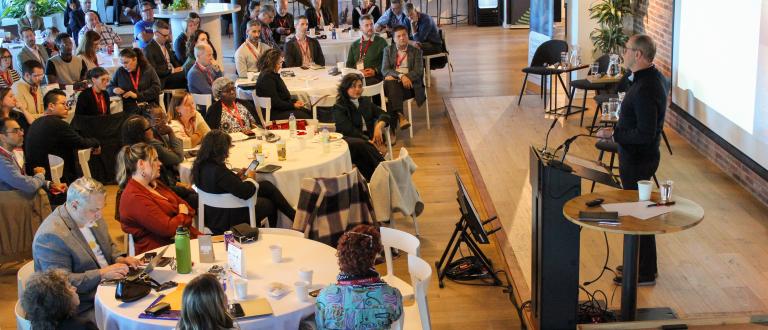Every founder hopes the organization they built will outlast them. Yet too many founders wait until it’s too late to prepare for a leadership transition. Succession planning isn’t just about finding “the next in line”—it’s about safeguarding your mission, your people, and the trust your organization has built.
The Challenge
In Canada, only 11% of charities report having a well-defined succession plan. For founder-led organizations, the risks are especially acute. The founder’s vision and passion often shape the organization’s identity and growth. Without deliberate planning, leadership transitions can cause instability, disrupt services, and jeopardize hard-earned relationships with funders, staff, and communities.
What do we mean by founder-led organizations and Founder’s Syndrome?
Founder-led organizations
These are nonprofits or charities that are still run by their original founder. The founder is often the Executive Director, CEO, or plays another central leadership role. Founders bring vision, energy, and credibility to their cause, but their strong influence can also create challenges for governance and long-term sustainability if roles aren’t clearly defined.
Founder’s Syndrome
This is a term used to describe what happens when the founder’s personality, passion, or control dominates the organization to the point that it inhibits healthy growth.
Common signs include:
- The organization’s identity is closely tied to the founder
- The founder resists delegating or sharing leadership
- Staff or board members are chosen primarily for loyalty, not expertise
- Strategic or succession planning is delayed or avoided
- Decision-making bottlenecks form because “everything goes through the founder”
While it often develops gradually, Founder’s Syndrome can limit innovation, cause high turnover, and even threaten an organization’s survival. The good news? With strong governance, open communication, and early succession planning, founder-led organizations can avoid these pitfalls and thrive.
A New Resource
Imagine Canada’s new resource, Good Governance and Leadership in Founder-led Organizations, shines a light on why succession planning matters—and how both founders and boards can prepare effectively.
The guide shares:
- Why to start early: Embedding succession into strategy from day one
- Two plans every nonprofit needs: an emergency plan for the unexpected and a long-term plan to grow leadership capacity over time
- The board’s role: Oversight, accountability, and support throughout transition
- Healthy letting go: How founders can view succession not as an ending, but as a key measure of success
Why it Matters for HR and Governance
Succession is not just a governance issue—it’s also an HR challenge. Staff look for stability. Funders look for continuity. Communities look for reassurance that the mission will endure. A well-structured succession plan addresses all three.
As one of the report’s contributors, Peg Herbert, put it:
“Consider making the ease and positive outcome of your retirement from this position a key measure of your success right from the beginning.”
Takeaway
Strong succession planning communicates resilience. It shows that your organization is prepared for the future and committed to thriving beyond the tenure of its founder. By planning ahead, founder-led organizations can protect their people, maintain trust, and ensure their mission continues for generations to come.
Read the full resource here. And start the conversation with your board today—because succession isn’t just about the future, it’s about protecting your mission now.



